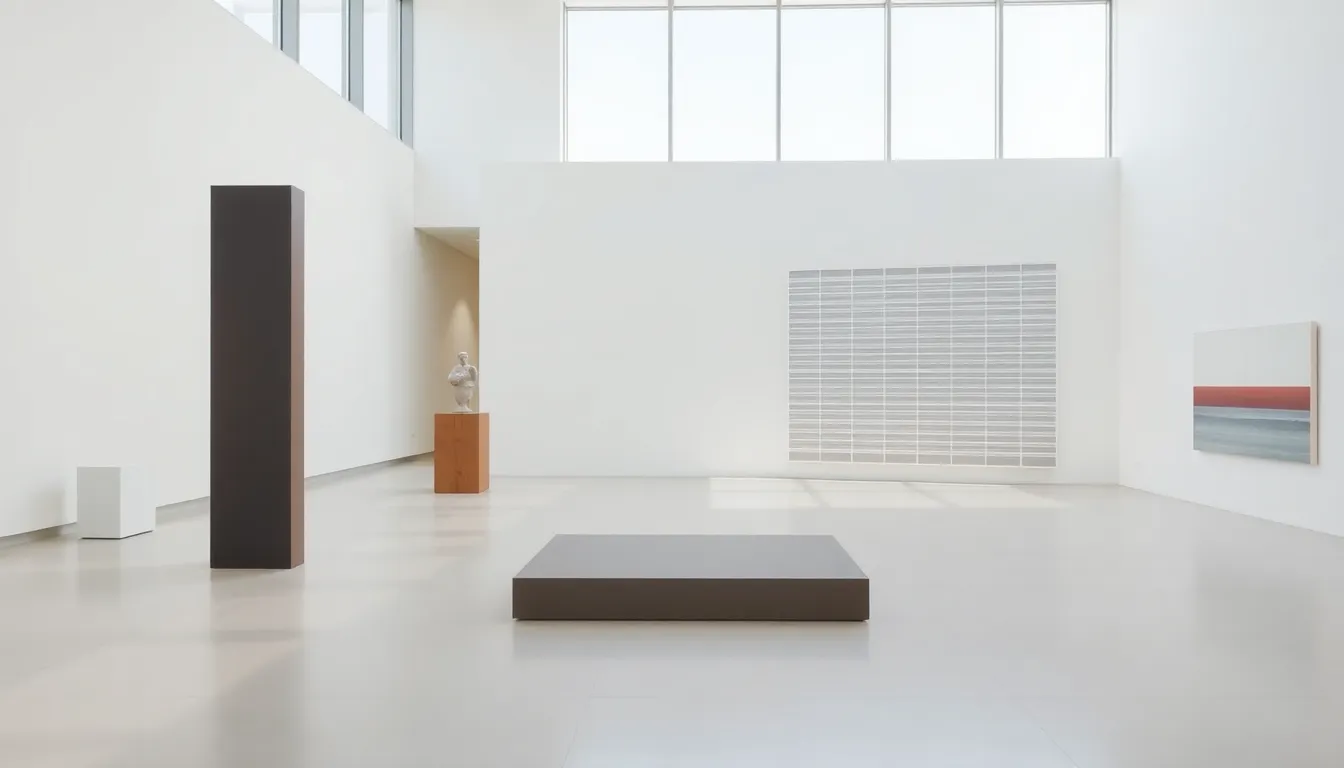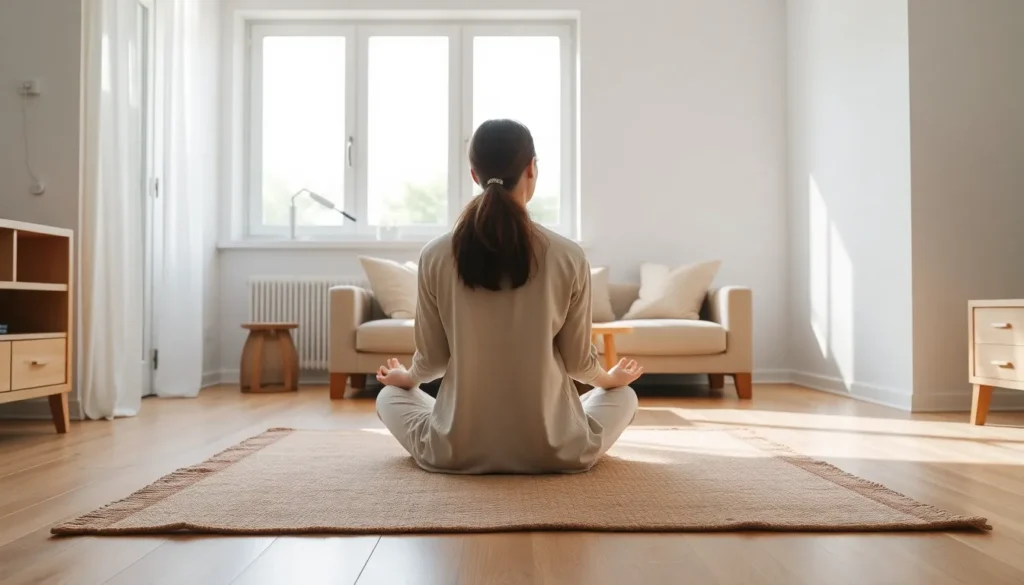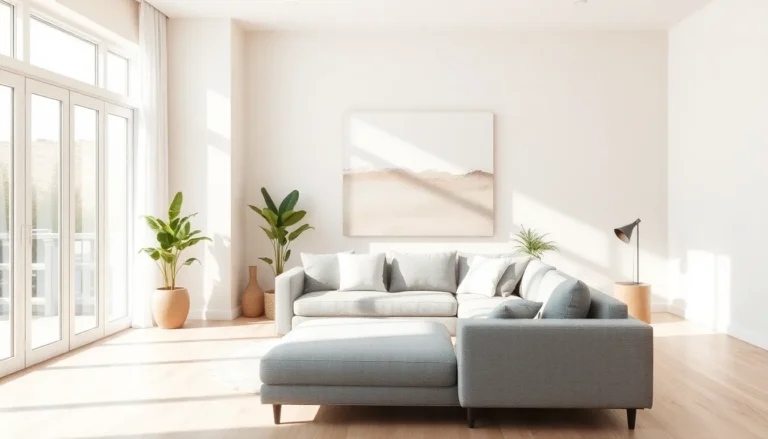Table of Contents
ToggleIn a world overflowing with excess, minimalist movements are gaining traction as a refreshing antidote. These movements advocate for simplicity, focusing on what truly matters in life. By stripping away the clutter—both physical and mental—individuals find clarity and purpose, leading to a more fulfilling existence.
From art and design to lifestyle choices, minimalism encourages a thoughtful approach to consumption and creativity. It challenges the notion that more is better, inviting people to embrace quality over quantity. As the minimalist philosophy spreads, it inspires countless individuals to rethink their relationship with possessions, time, and even relationships, fostering a culture centered around intentional living.
Overview of Minimalist Movements
Minimalist movements encompass various philosophies and practices aimed at simplifying life. Minimalism emerged as a counter to consumer culture, promoting a lifestyle that values simplicity over complexity. This movement manifests in diverse areas, including art, design, architecture, and lifestyle choices.
Artistic minimalism emphasizes fundamentals such as color, form, and texture, stripping away unnecessary elements. Pioneers like Donald Judd and Agnes Martin showcased how fewer materials could convey deeper emotions and ideas. Their work influenced contemporary forms of creative expression and reinforced the idea that less can indeed be more.
In design and architecture, minimalism showcases clean lines, open spaces, and functional aesthetics. Prominent architects, including Tadao Ando and Ludwig Mies van der Rohe, exemplified this principle through their structures. Their creations highlight the importance of light, space, and materials, establishing a harmonious relationship between the built environment and its inhabitants.
Lifestyle minimalism focuses on decluttering physical and mental spaces. Individuals adopting this approach often prioritize meaningful experiences and relationships over material possessions. Various advocates, including Joshua Becker and Marie Kondo, emphasize the benefits of letting go of excess, establishing routines centered around what truly adds value to life. This lifestyle shift encourages mindfulness and intentionality, fostering a sense of peace in a chaotic world.
Overall, minimalist movements continue to inspire a reevaluation of societal norms, encouraging individuals and communities to embrace simplicity as a pathway to greater fulfillment.
Historical Background

Minimalist movements emerged in the 20th century as a significant reaction to the complexities of modern life. Influenced by various philosophical, artistic, and cultural currents, minimalism advocates for simplicity in multiple domains.
Early Influences
Early influences on minimalism stem from several philosophies and movements. The Bauhaus, founded in 1919, emphasized functionality and simplicity in design, impacting architecture and art. Zen Buddhism introduced concepts of mindfulness and simplicity, promoting the value of essentialism. Abstract Expressionism, prominent in the mid-20th century, led artists to seek reduced forms and clear expression, paving the way for minimalism’s focus on basic elements.
Key Artists and Works
Key artists played major roles in advancing minimalist aesthetics. Notable figures include:
- Donald Judd: Known for his geometric sculptures that emphasize form and space, his works are characterized by a rejection of illusion and a focus on materiality.
- Agnes Martin: Celebrated for her subtle grid paintings, Martin’s work reflects tranquility and meditation, highlighting simplicity’s emotional depth.
- Yayoi Kusama: Renowned for her immersive installations, Kusama uses repetitive patterns and polka dots to explore infinity while reinforcing minimalism’s focus on essential ideas.
In architecture, Tadao Ando and Ludwig Mies van der Rohe exemplify minimalist principles through their designs, which prioritize clean lines, light, and open spaces. Their work fosters a sense of harmony and clarity, aligning with minimalism’s core philosophy.
Principles of Minimalism
Minimalism embodies specific principles that guide its aesthetic and philosophical pursuits, promoting simplicity and clarity in various aspects of life.
Aesthetic Characteristics
Minimalist aesthetics focus on essential elements, prioritizing forms that convey meaning through simplicity. Key characteristics include:
- Reduction: Stripping away unnecessary components to highlight core functions and messages.
- Clean Lines: Utilizing geometric shapes and straightforward forms that promote harmony and balance.
- Neutral Color Palettes: Often employing subdued colors to emphasize space and create calming environments.
- Natural Materials: Integrating materials like wood, stone, and metal to connect with nature and enhance tactile experiences.
- Functional Design: Ensuring every element serves a purpose, combining beauty with practicality.
These characteristics create environments that evoke tranquility and intentionality, allowing the observer to engage with the essence of the subject matter.
Philosophical Underpinnings
Minimalism also possesses deep philosophical roots that extend beyond aesthetics. The central tenets include:
- Intentionality: Emphasizing conscious choices in consumption and lifestyle, encouraging individuals to focus on what truly matters.
- Simplicity: Advocating for straightforwardness in thought and action, filtering out distractions that impede clarity.
- Mindfulness: Promoting presence in daily activities, fostering an awareness of one’s surroundings and experiences.
- Quality Over Quantity: Stressing the importance of high-quality possessions and experiences rather than a multitude of fleeting distractions.
- Connection to Nature: Emphasizing a harmonious relationship with the natural world, inspiring a lifestyle that values ecological consciousness.
These philosophical underpinnings offer individuals a framework for evaluating their relationships with possessions and experiences, guiding them toward a more meaningful existence.
Impact on Various Disciplines
Minimalist movements profoundly influence various disciplines, shaping perspectives and practices across art, design, architecture, and literature. These movements advocate for simplicity and clarity, resonating with individuals seeking meaningful experiences.
Art and Design
Art and design reflect minimalist principles through abstraction and essentialism. Minimalist artists prioritize basic forms, vibrant colors, and deliberate compositions. For example, Donald Judd’s box sculptures and Agnes Martin’s subtle, grid-like paintings illustrate how less can evoke powerful emotions. In design, minimalism emphasizes functionality and clean aesthetics. Brands like Apple adopt minimalist design to enhance user experience, fostering intuitive interaction with technology. This approach values quality materials and craftsmanship, promoting long-lasting products.
Architecture
Architecture exemplifies minimalism through simplicity and functionality. Architects like Tadao Ando and Ludwig Mies van der Rohe showcase clean lines and open spaces that connect occupants to their surroundings. Ando’s churches highlight natural light and materials, creating serene environments. Minimalist architecture focuses on sustainability by reducing excess and emphasizing harmony with nature, demonstrated in projects that integrate green building practices. This discipline fosters thoughtful design that enhances both form and function.
Literature
Literature embraces minimalism through concise storytelling and stripped-down narratives. Authors like Ernest Hemingway exemplify this by using simple language and short sentences to convey complex emotions. Minimalist literature often features themes of detachment and introspection, encouraging readers to reflect on their experiences. This style prioritizes substance over embellishment, enabling impactful narratives that resonate deeply with audiences. Minimalism in literature invites a reexamination of the human experience, focusing on authenticity and clarity.
Contemporary Minimalist Movements
Contemporary minimalist movements reflect a shift toward simplicity in various aspects of life, emphasizing intentionality and mindful consumption. These movements span digital landscapes and personal lifestyles, engaging individuals to reassess their priorities.
Digital Minimalism
Digital minimalism emphasizes meaningful engagement with technology. It promotes the use of digital tools that align with personal values and goals while reducing unnecessary distractions. Practitioners favor intentional usage over mindless consumption, seeking to reclaim time and attention. Notable proponents like Cal Newport advocate for digital decluttering, encouraging individuals to evaluate apps, social media, and online activities based on their overall impact. Research indicates that reduced screen time correlates with increased well-being, highlighting the benefits of this approach.
Lifestyle Minimalism
Lifestyle minimalism focuses on simplifying one’s physical and mental environment. It encourages individuals to declutter possessions and priorities, fostering a sense of peace and clarity. Advocates like Joshua Becker and Marie Kondo guide followers to let go of items that do not spark joy or serve a purpose, promoting a streamlined approach to living. This lifestyle encourages meaningful experiences and relationships while prioritizing quality over quantity. Studies show that individuals who embrace lifestyle minimalism often report greater satisfaction and improved mental health, underscoring its effectiveness in creating a more intentional life.
Minimalist movements offer a refreshing perspective amidst the chaos of modern life. By embracing simplicity individuals can cultivate a deeper connection to what truly matters. This intentional approach fosters clarity and purpose while inspiring a shift away from consumer-driven habits.
As the philosophy continues to gain momentum it encourages a broader cultural transformation. People are increasingly prioritizing meaningful experiences over material possessions. The impact of minimalism resonates across various disciplines showing its versatility and relevance in today’s world.
Ultimately minimalism invites everyone to explore the profound benefits of living with less and finding joy in simplicity.







